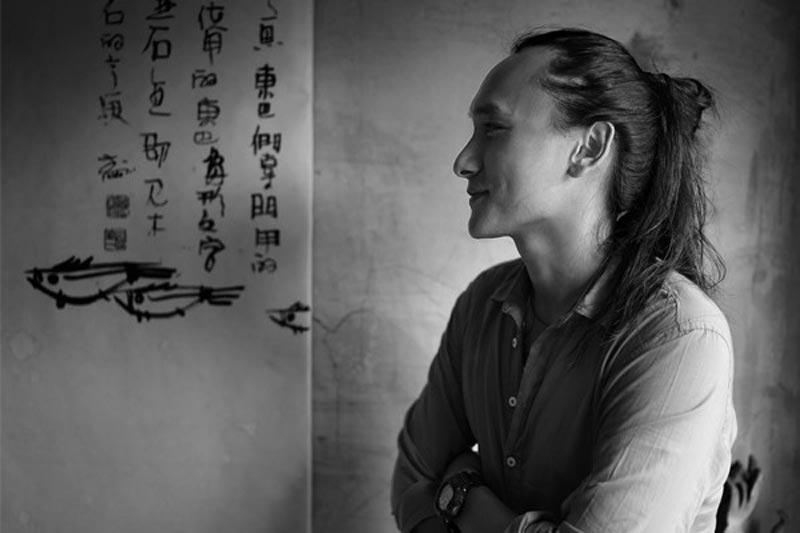 Image
Image
A yak in the classroom
Pawo Choyning Dorji is a photographer and filmmaker from Bhutan but travels with his camera all across the world. He has published Seeing Sacred: Lights & Shadows Along the Path, a book on photography and Sacred Paths which retraces Master Xuanzangs journey to India. His directorial debut Lunana A Yak in the Classroom, was the sole entry from Bhutan at the recently held 25th KIFF in Kolkata. Shoma A. Chatterji in a tete-a-tete with the director
Excerpts from an interview
Tell us a little about your film Lunana – A Yak in the Classroom
It is a very simple film with a straightforward story revolving around a young man who goes to Lunana as a teacher in the local school. It has been shot entirely on location in the small village called Lunana, at an average altitude of 5,000 meters.
What is the film about?
It is about the journey of Ugyen Dorji who has to go to Lunana reluctantly due to a transfer order. He does not care about the profession of a teacher either and is waiting to migrate to Australia soon. The journey, his interaction with the local people, the culture shock when he witnesses the terrible condition of the school without even a blackboard — the children have never heard of it or seen one, his return home when winter sets make up the story. The aspirations of the community and the hope in the eyes of his little students compel the teacher to change his mind about leaving the place.
.jpg)
What were the challenges you faced along with your team?
Making the film itself was a challenge. Lunana is one of the remotest villages in the Bhutanese Himalayas and perhaps the remotest school in the world. The trekking to the actual school where the film was shot took us eight long days; we were all very tired. Alongside the first-time actors there are many villagers who have contributed to the shooting, making the film a kind of hybrid between fiction and documentary.
Since there is no electricity in the village, how was it possible to shoot?
Due to the remoteness and lack of facilities, the film was shot on solar charged batteries. The making was more challenging than the film itself. The film has been chosen for screening across ten international film festivals and KIFF is one of them.
.jpg)
How was the experience working with the kids?
Making a film with children is never easy, but here the little ones are real gems, little drops of pure happiness, impossible to ignore. They just play themselves. Pem Zam, head of class, with a vivacious smile is the true star of the film. You will notice that as soon as little Prem appears in the film, its mood changes to one of cheer.
The yak is shown as a very important part in Lunana
Yes. The locals right across Lunana are very fond of the yak and that is why little Prem Zam asks the teacher to keep the yak inside the classroom from which the film derives its title. yak dung is the sole source of fuel here and even the teacher learns to collect the dung for his fuel needs. In fact, most of us are Buddhists and one of our teachings says that no animal should be harmed. The yak has a special place in high altitude places in places like Lunana in Bhutan.
.jpg)
Why are the teachers sent back before the onset of winter and the school remains closed?
Lunana is surrounded by mountains on all sides which are completely covered with snow and the cold is unbearable even for the villagers who live there. So, when this film was made in 2006, the teachers had to trek down to the plains but now, they are sent both ways by choppers at government cost.
There is a spiritual touch in the song that Saldon sings as an “offering”?
Yes, and that is also a part of the lives of the local villagers. She teaches Ugyen Dorji the song and also explains why she sings it – as an offering to everything around them – Nature, the mountains, the trees, the animals and even the spirits that cannot be seen but can be felt. The song Legpai Lhadar Gawo carries the philosophy - Nothing lives on forever; to meet and depart is the way of life.
.jpg)
Are you happy that your film was chosen for screening at the 25th Kolkata International Film Festival?
I had heard on numerous occasions about Kolkata and their love of art and culture. Besides this is home to Tagore and Satyajit Ray, artistic capital of India! The screenings at Kolkata International Film Festival has made me realize just how enthusiastic and passionate Bengalis are. This is as important to me as is the fact that the film had its world premiere at the London Film Festival in October this year.
Top Headlines
-
Offtrack
A coin historian
May 24, 2025
-
Offtrack
Planet Word museum: Washington DC's ode to power of language
May 19, 2025
-
Offtrack
As AI transforms the world, more universities teach the technology
June 24, 2024
-
Offtrack
An indigenous cultural melting pot
March 13, 2024
-
Offtrack
War and Peace: The Last Men Standing
December 08, 2023
-
Offtrack
Tuk-tuk diplomacy: Women US diplomats discover Delhi in pink autos
October 30, 2022
-
Offtrack
Radio Ceylon: The Lankan queen of airwaves
September 24, 2022
-
Offtrack
A View From Space With Indian-American astronaut Raja Chari
August 30, 2022
-
Offtrack
Pompeii: From ashes and memories
December 13, 2020
-
Offtrack
Memories of Tigre, Maradona's chosen home
November 27, 2020
